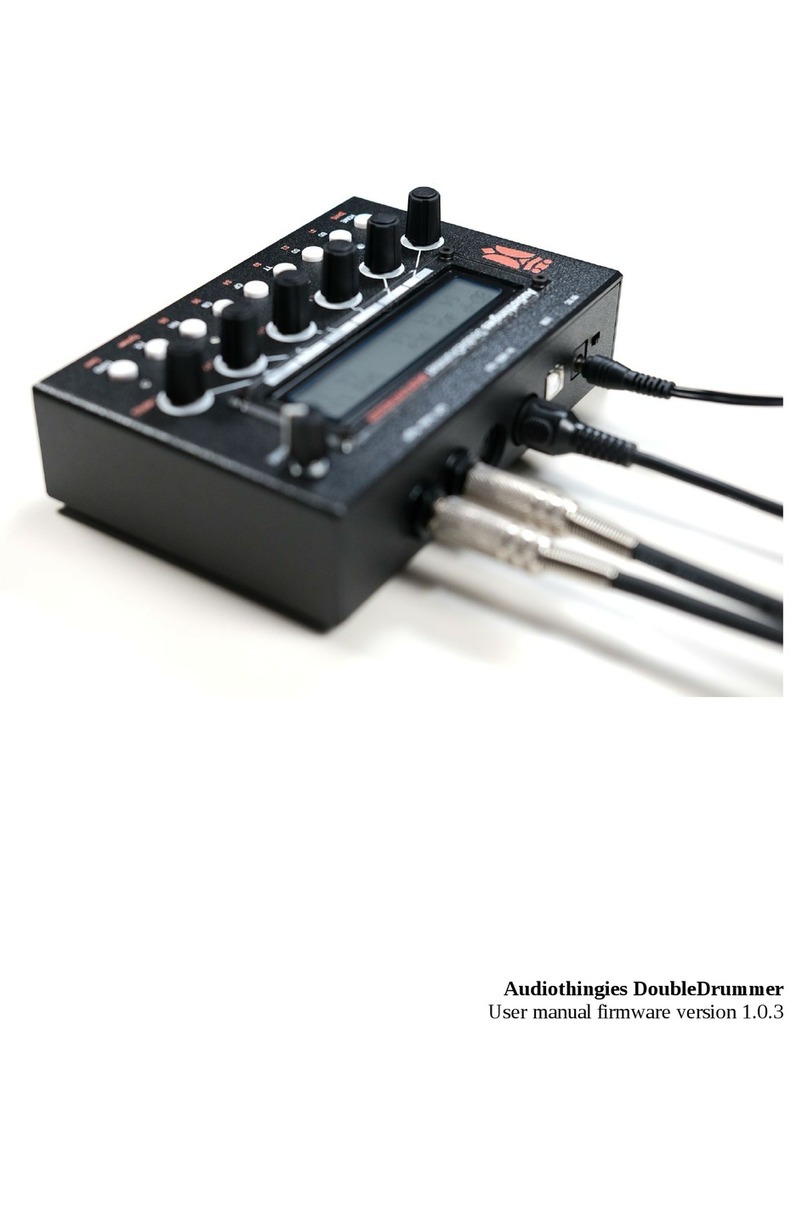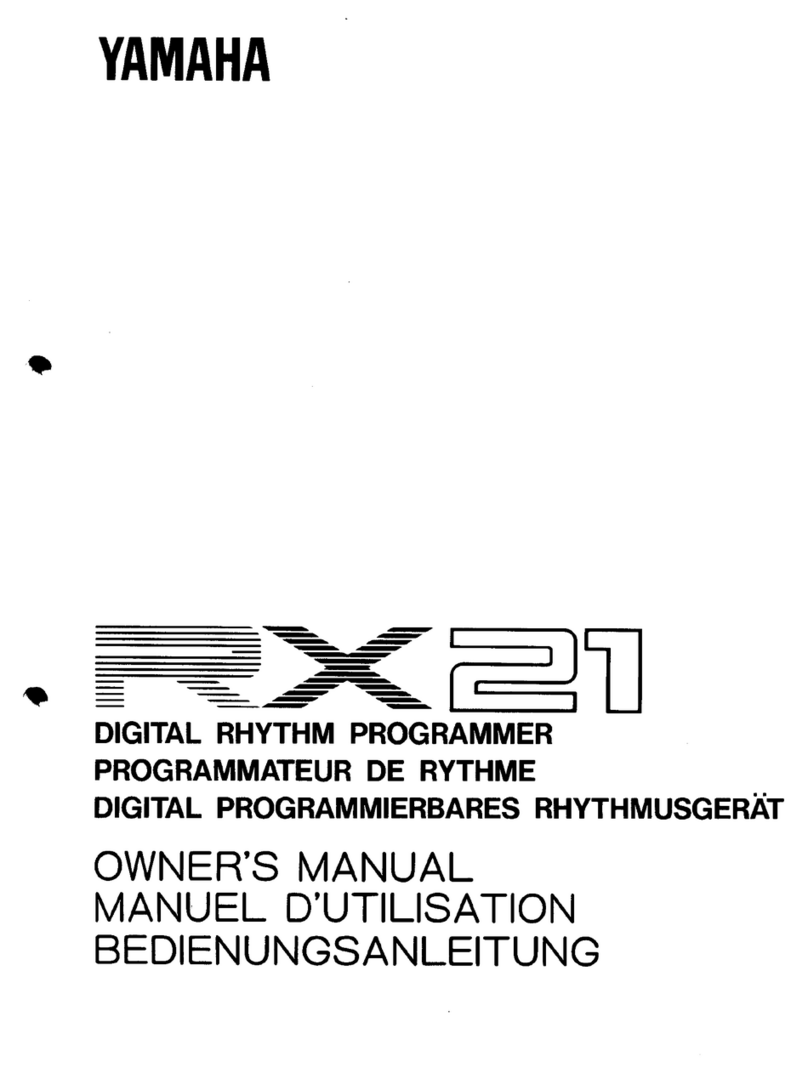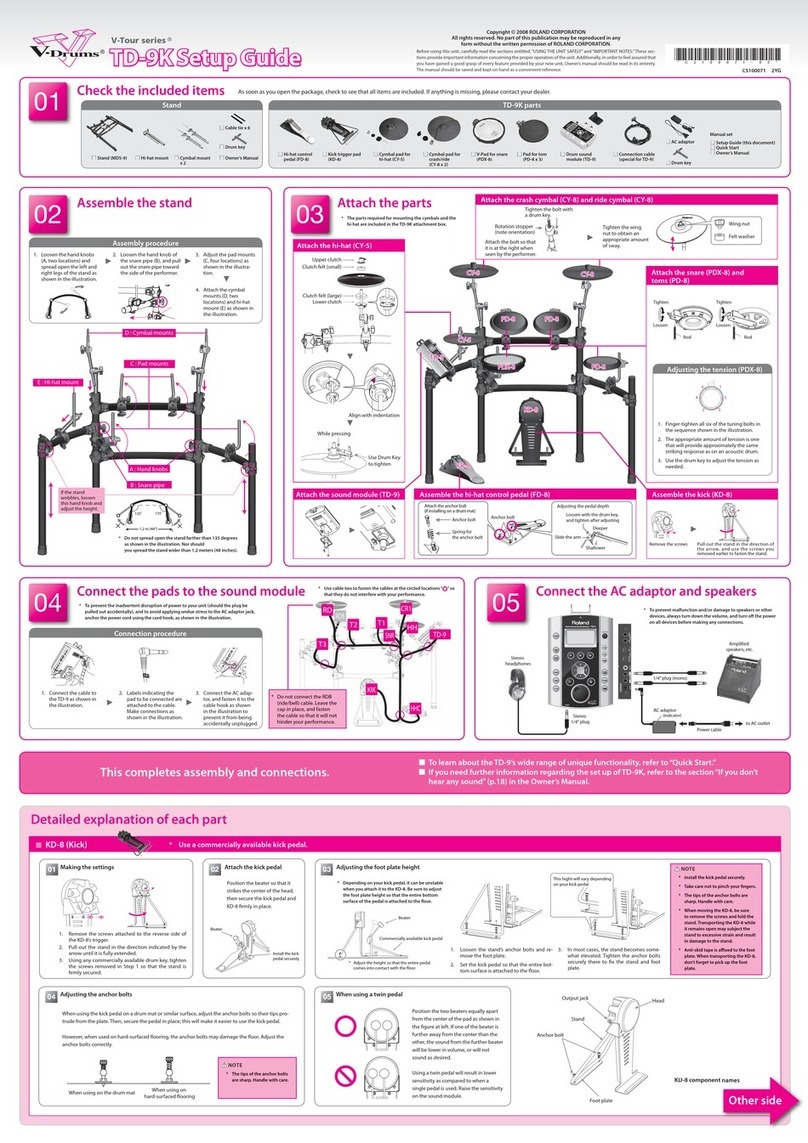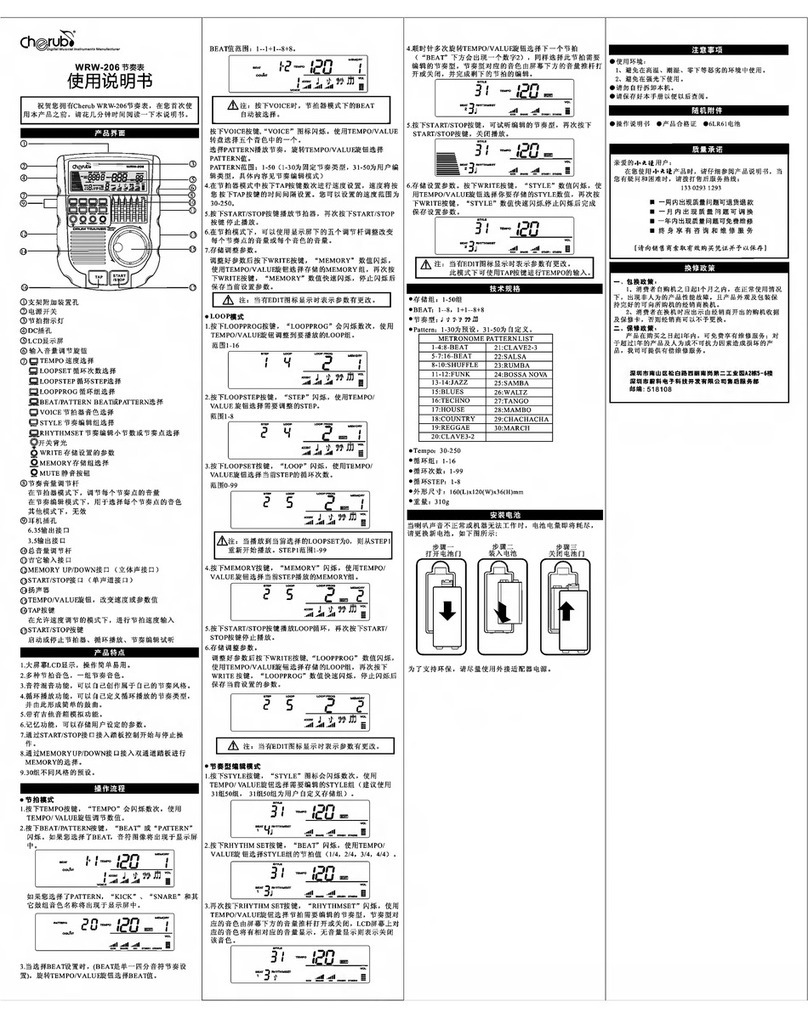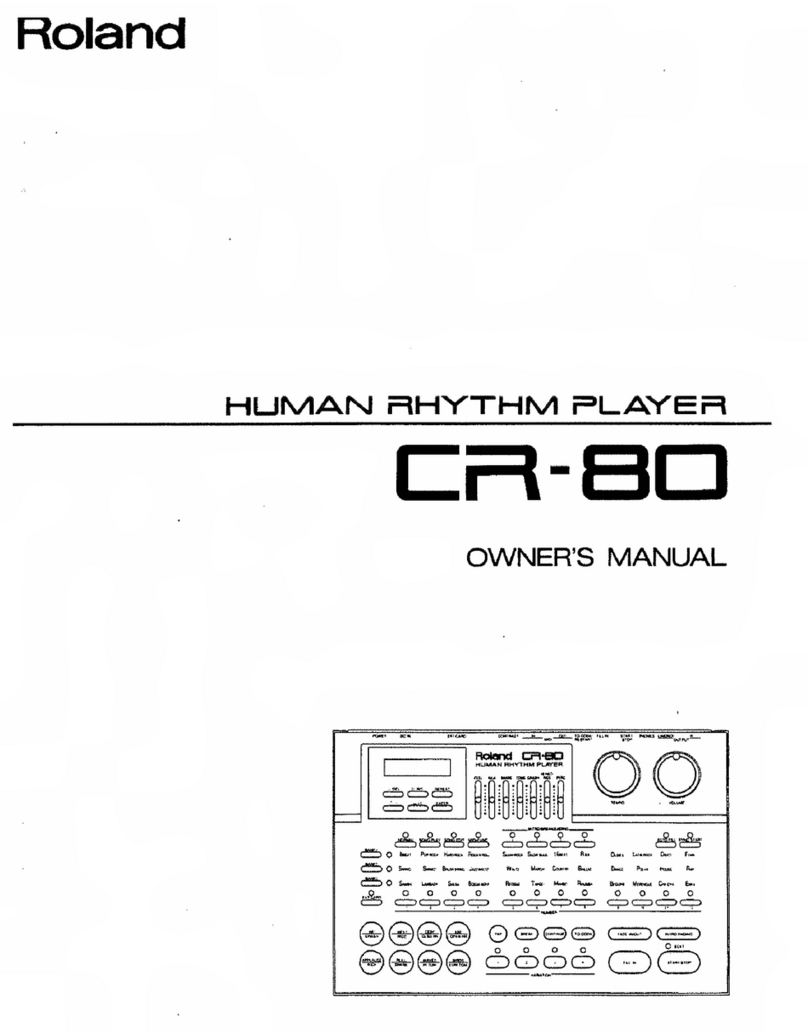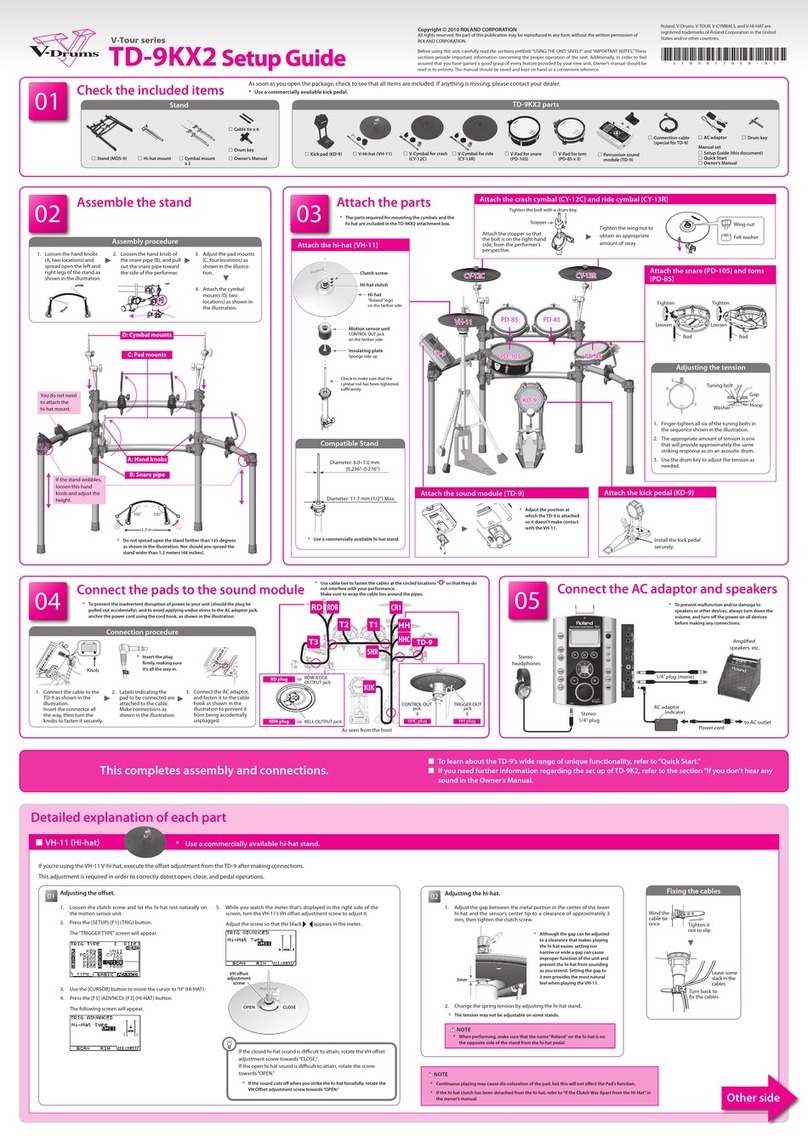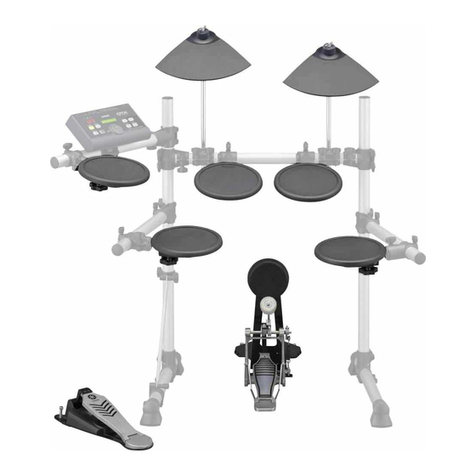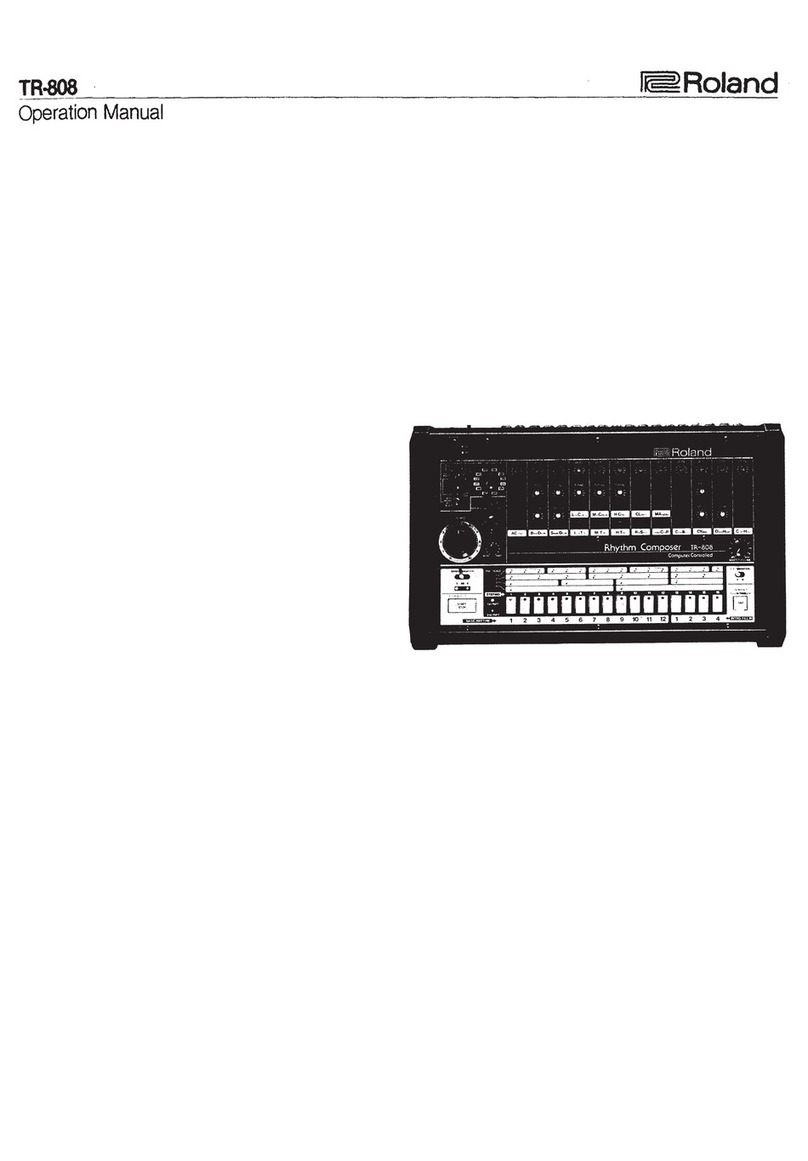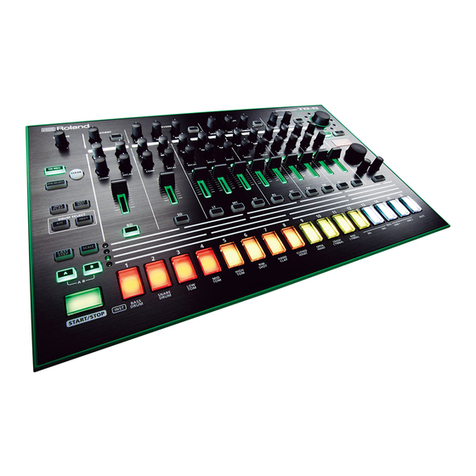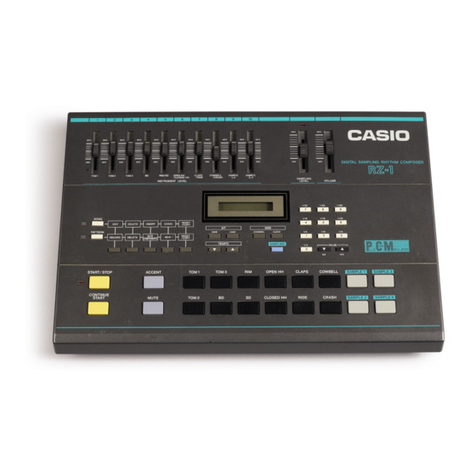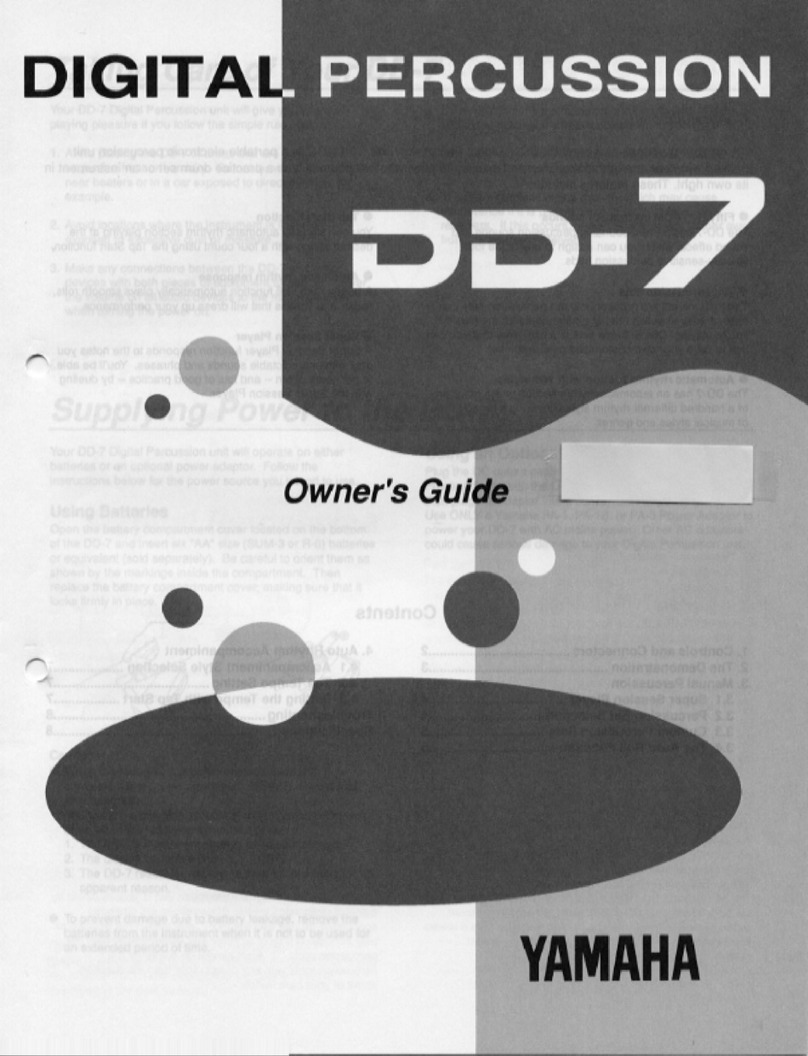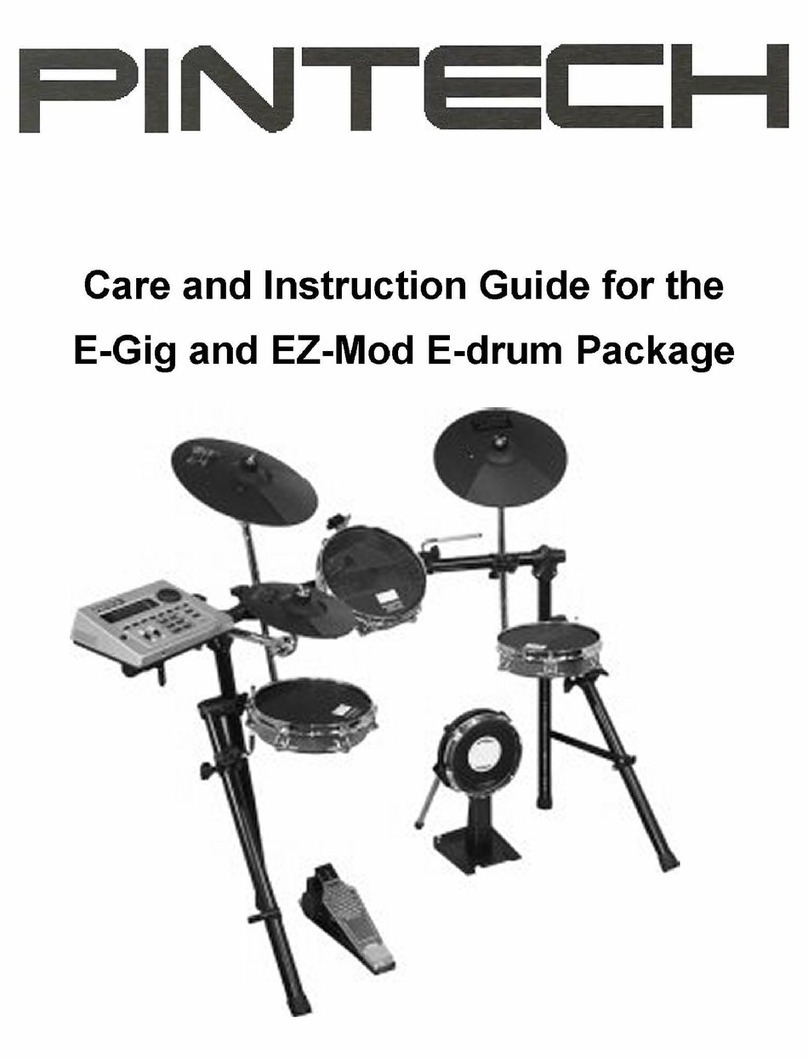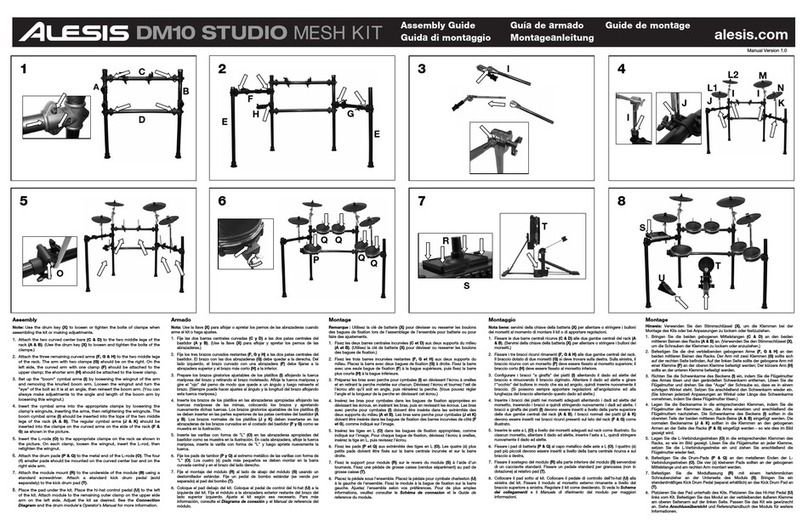D'Addario Evans DSSG18 User manual

TUNING THE BASS
WATCH IT at evansdrumheads.com/tuningbass
1) Like the toms and snare, prepare
the bass drum and mount the batter
head.
2) Tighten the batter head using the
sequential tuning pattern until the
head begins to resonate.
3) To achieve the lowest possible pitch
for your bass drum, stand over the
drum and place your palm in the
center of the head. While applying
pressure, de-tune each tension rod
until you begin to see wrinkles, then
turn the key one full turn back. The
drum will be at the lowest pitch while
still fully resonating.
4) Clear the head of excess overtones,
as before.
5) Flip the drum over and repeat for the
resonant head.
6) After initial tuning is complete,
position the drum into playing
position. Strike the front head slightly
above center and adjust the resonant
and batter head as needed, using the
“wrinkle technique” if necessary.
7) The Evans EQ pad can be positioned
in several different ways. Experiment!
Multiple pads can be installed for
more muffling options.
High Performance Quick Tips:
Bass Drum Angle — Do not tilt your bass drum
towards you. This distorts the wood hoop,
raising the pitch of the drum and limiting
its responsiveness. Set you bass drum
angle parallel to the floor for more low-
end and a big sound.
Micing your Bass Drum — If you use an
internal bass mic, use a simple binder clip
to keep the microphone cable from touching
the front bass head. This will allow the head to
resonate freely, adding low-end to your bass drum sound.
#19954-CHDJJg
EVBR-DSSG18
3
6
7
D’Addario, Evanss, Promark, and Puresound are registered
trademarks or trademarks of D’Addario & Company, Inc.
or its affiliates in the United States and/or other countries.
Copyright © 2015. D’Addario & Company, Inc.
All rights reserved.
D’Addario & Company, Inc.
Farmingdale, NY 11735 USA
daddario.com
evansdrumheads.com
Visit the Evans website to find
the drumhead and accessory
options that are right for you.
puresoundpercussion.com
Check out the Puresound website
and find the snare wire option
that best suits your playing style
and preferred sound.
promark.com
Visit the Promark website to
get up-to-the-minute info on
the latest products and artist
features.
FOR MORE INFO
CHECK OUT OUR SITES
SURVIVAL
GUIDE
by BOB GATZEN
DRUM SET
DRUM H EAD S
TM

High Performance Quick Tips:
Rack Tom Mounting — There are
2 types of tom arms: the L-type
(DW, Tama, Gretsch, Mapex,
etc.) and Horizontal-type (Pearl,
Yamaha). Dynamic range can
be affected by the position of
the tom on the arm. Experiment
by positioning your tom at different
locations along the tom arm rod.
Float the Floor Tom — If you use tom legs,
placing a piece of foam under each leg will
increase resonance. Pick up a foam “workout”
mat, cut a piece off, and put it under the legs of the
floor tom.
Refresh your Resonants — Even though they’re not hit with a
stick, bottom (resonant) heads will still lose their tone in time due
to constant vibration. Change your bottom heads every third or
fourth time you change your batter heads to maintain a lively and
consistent drum tone.
1. Clean off the bearing edges and counter hoop before installation.
Remove any lint or debris from inside the shell.
2. Listen to the head through all steps in the tuning process. Strive
for a clear, focused sound by keeping all lugs in tune at all times.
3. Develop your “key technique” by monitoring the amount you turn
each lug and how it affects pitch. Developing a good “feel” for
tuning will help the process.
4. Always use the Opposite Lug tuning Sequence (OLS) by referring
to the diagram that is relative to the number of lugs for your drum.
1. Finger-tighten all lugs to create equal starting tension.
2. With 1/2 turns from a drum key, use the appropriate tuning
sequence to tune the head until it resonates.
3. While tapping the head with a stick slightly off-center, tune each
lug in small increments (1/4 turns) until the head begins to
resonate and the wrinkles in the head disappear.
4. Fine tune the drum by tapping directly
in front of each tension rod while tuning
around the drum. Strive for equal pitch at
each tension rod. Use this technique to
bring the head up to the desired pitch.
5. Tune the bottom head using this same
process, closely matching the pitch to the
batter head.
Utilize the same general techniques described for tuning toms.
Our recommended pitch for the bottom snare head is A-440.
Snare Wire Installation
High Performance Quick Tips:
The Hoop-Laws — Different counter hoops will affect the sound and
feel of the drum in different ways. Change the sound of your drum
by changing hoops.
Die-Cast — reduces overtones and resonance, resulting in
enhanced attack and a dryer, more focused sound.
Flanged — increases overtones and resonance, producing a
more open and frequency-rich tone.
2
Thread the snare cord or strap through
the end plates and center the snare wire
unit on the bottom head.
4
Center the snare wire unit across the head
(end plates must not touch bearing edge)
and then tighten the butt end clamp.
Using the snare cord or strap, attach one
end of the snare wire to the butt end
clamp (do not tighten clamp).
3
5
Thread the snare cord or strap through
the strainer clamp while in its “off”
position and tighten the clamp.
Turn the strainer on and adjust
the tension knob to your desired
snare response.
1
Remove old snare wires and adjust the
snare tension knob until it’s halfway
between its highest and lowest positions.
High Performance Quick Tips:
Snare Basket — Do not over-tighten the snare drum basket. The
pressure exerted on the hoop can knock the head out of range and
limit its dynamic range.
Select your Snare Sound — Snare wires have a dramatic effect on the
drum’s sound. Upgrading to a premium snare wire (like Puresound) will
improve the overall sound of the drum. Different models can make a
drum sound drier, darker, brighter, warmer, or more open.
Minimizing Snare Buzz — If you’re experiencing out of control snare buzz:
1. Check your tuning — extreme high and low tuning encourages
snare buzz.
2. Check snare wires for bent or loose wires.
3. Try a Puresound Equalizer Series snare wire — it has an offset
wire design that minimizes buzz.
4
GENERAL TUNING TUNING THE TOMS TUNING THE SNARE
WATCH IT at evansdrumheads.com/tuningtomWATCH IT at evansdrumheads.com/tuningintro WATCH IT at evansdrumheads.com/tuningsnare
